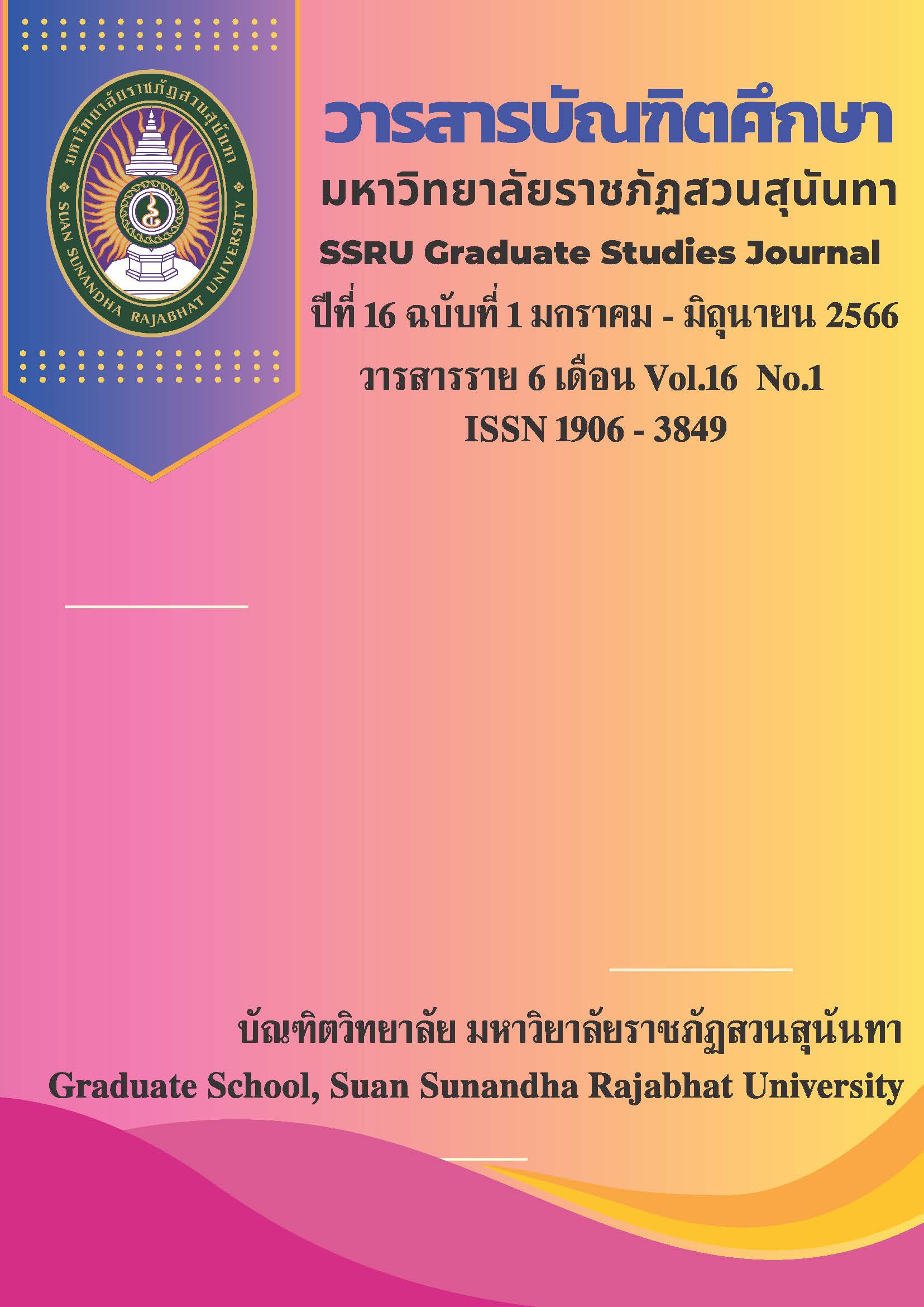Agile Leadership among the Management Teams of School Under the Secondary Educational Service Area Office, Bangkok Area 2
Main Article Content
Abstract
The research aimed to achieve two primary objectives: 1) investigate the level of Agile leadership among the management teams of schools under the supervision of the Secondary Educational Service Area Office, Bangkok Area 2, and 2) compare the level of Agile leadership across these management teams based on their educational level, working experience, and school size. This survey-based study involved a sample of 365 teachers from the aforementioned schools. The sample size was determined using Cohen's formulated table. The respondents were selected using a combination of stratified sampling, random sampling, and proportional sampling techniques. Data were collected through a questionnaire with a high reliability coefficient of .987. Statistical analysis involved the use of various measures, including percentages, means, standard deviations, t-tests, One-way ANOVA, and pairwise mean comparisons using Scheffe's Method. The research findings revealed two key outcomes. Firstly, the respondents demonstrated a high level of Agile leadership. Secondly, significant variations in Agile leadership levels were observed among teachers with different educational backgrounds, work experiences, and schools of varying sizes. These differences were evident both in the overall measure of Agile leadership and across individual aspects. The statistical significance of these variations was established at a level of .05.
Article Details
References
กิตติยาภรณ์ เติมกระโทก. (2564). Agile รวดเร็ว ว่องไว และได้ประสิทธิภาพ. งานจัดการความรู้คณะ แพทยศาสตร์ศิริราชพยาบาล
ชัยธวัช เนียมศิริ. (2561). ภาวะผู้นำที่มีประสิทธิภาพในยุค Thailand 4.0 : กรณีศึกษาจังหวัดขอนแก่น. สำนักงานปลัดกระทรวงมหาดไทย กระทรวงมหาดไทย
ปาฑ์ ไกรวิญญ์. (2561). กลยุทธ์การบริหารโรงเรียนเอกชนระดับมัธยมศึกษาตามแนวคิด การพัฒนานักเรียนให้มีภาวะผู้นาอย่างคล่องแคล่ว. วิทยานิพนธ์ครุศาสตรดุษฎีบัณฑิต สาขาวิชาบริหารการศึกษา คณะครุศาสตร์ จุฬาลงกรณ์มหาวิทยาลัย
ผ่องพรรณ พลราช. (2560). ภาวะผู้นำของผู้บริหารสถานศึกษาในศตวรรษที่ 21 สังกัดสำนักงานเขตพื้นที่การศึกษามัธยมศึกษา เขต 29. วารสารราชธานีนวัตกรรมทาง สังคมศาสตร์. 1(1).
มูนาดียา วาบา .(2560). ภาวะผู้นำการเปลี่ยนแปลงกับการบริหารงานบุคคลของผู้บริหารโรงเรียนเอกชนสอนศาสนาอิสสามจังหวัดปัตตานี. วิทยานิพนธ์ครุศาสตรมหาบัณฑิต สาขาวิชาการบริหารการศึกษา บัณฑิตวิทยาลัย มหาวิทยาลัยราชภัฏยะลา.
สุวัฒน์ จุลสุวรรณ์ และคณะ. (2563). การศึกษาภาวะผู้การเปลี่ยนแปลงตามความคิดเห็นของครู สังกัดสำนักงานเขตพื้นที่การศึกษามัธยมศึกษาภาคตะวันออกเฉียงเหนือ, วารสารมหาจุฬานาครทรรศน์. 7(5).
อัจฉรา โพธิ์อ้น. (2557). ภาวะผู้นำของผู้บริหารสถานศึกษา ตามทัศนะของผู้บริหารและครูผู้สอน สังกัดสำนักงานเขตพื้นที่การศึกษาประถมศึกษาสิงห์บุรี. วารสารวิชาการ มหาวิทยาลัยกรุงเทพธนบุรี. 4(1).
Akkaya, B., and et al. (2022).Agile Leadership and Perceived Career Success: The Mediating Role of Job Embeddedness.International Journal of Environmental Research and Public Health. 19, (4834).
Cohen, L., Manion, L., & Morrison, K. (2018). Research Methods in Education (8th ed). London : Routledge.
Joiner, B., & Josephs, S. (2007).Leadership Agility: Five Levels of Mastery for Anticipating and Initiating Change. San Francisco: A Wiley Imprint.
Prasongko, A. (2019). The Role of the Agile Leadership Model as a Competitive Advantage for the Future Leader in the Era of Globalization and Industrial Revolution 4.0.Jurnal Pertahanan, 5(3).


